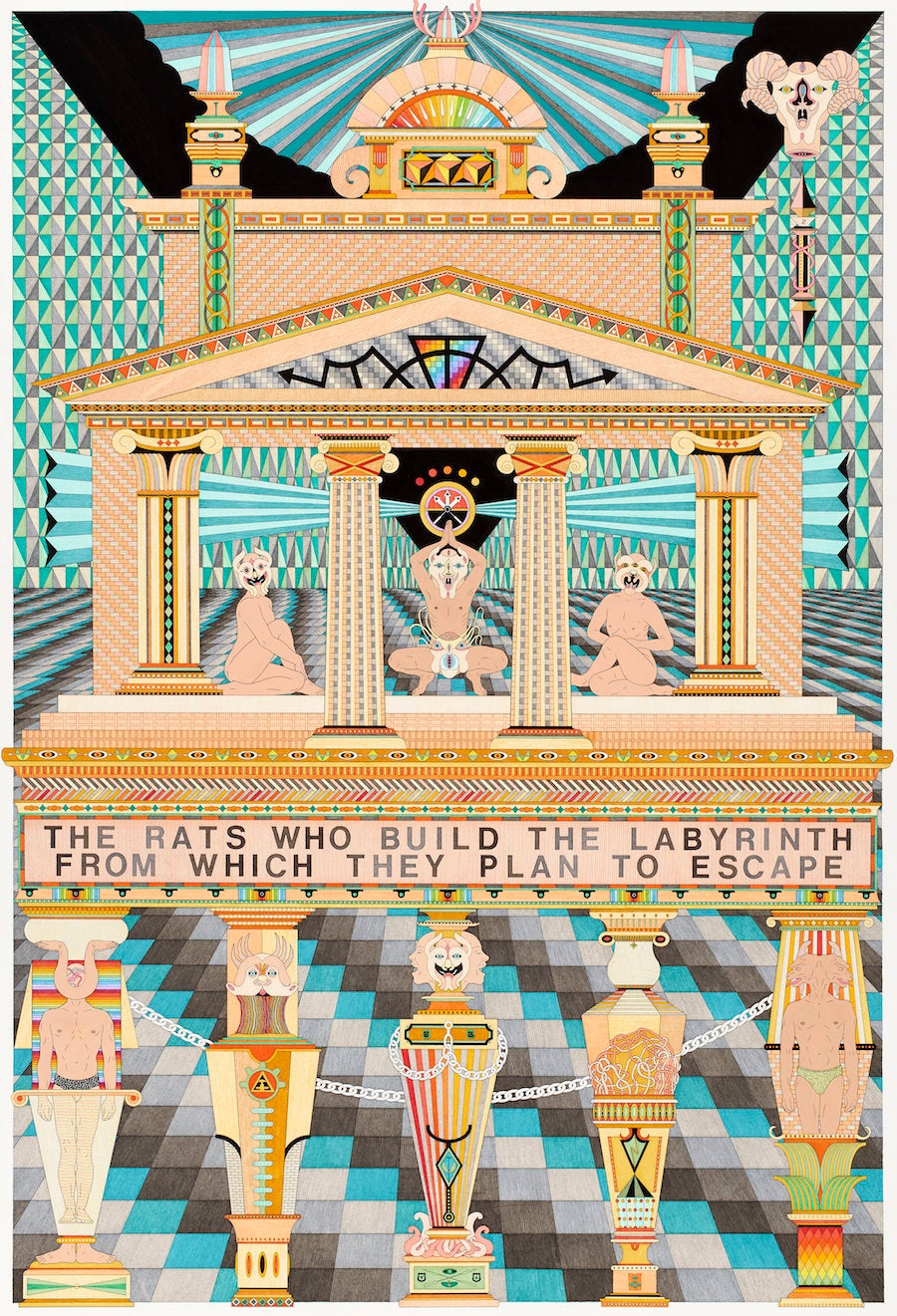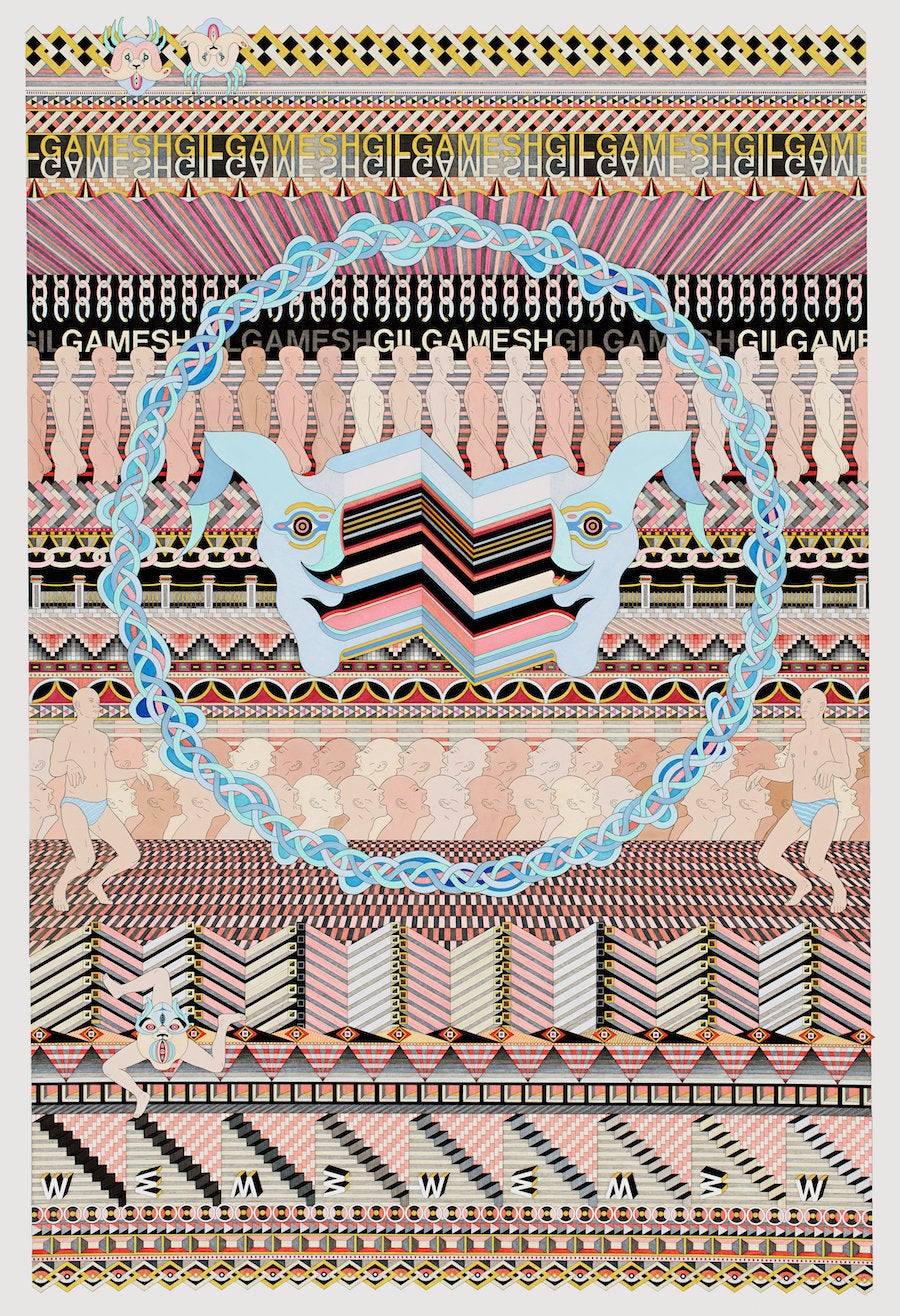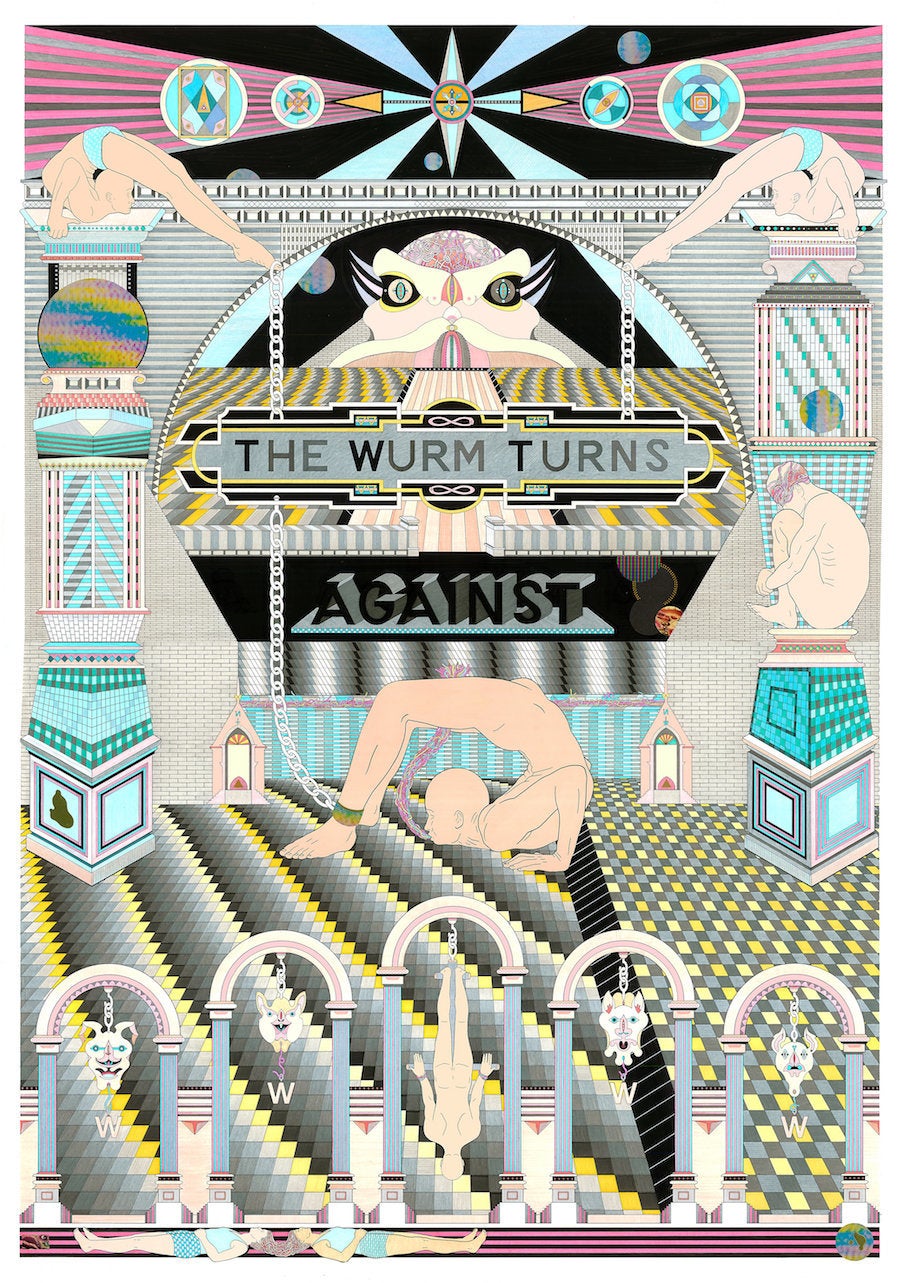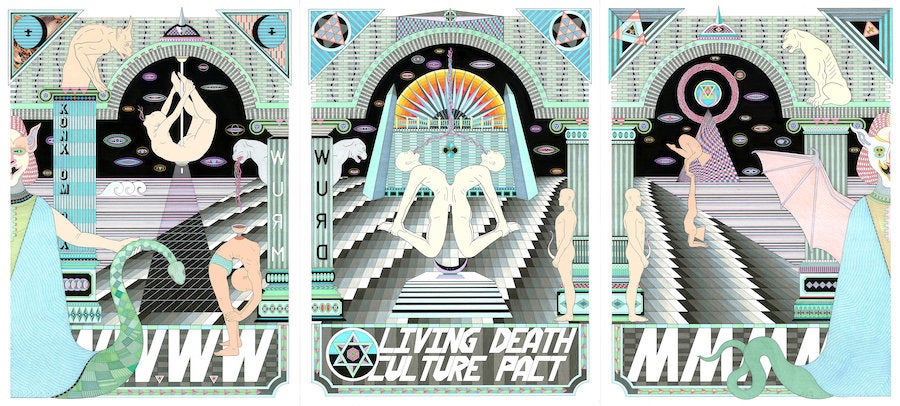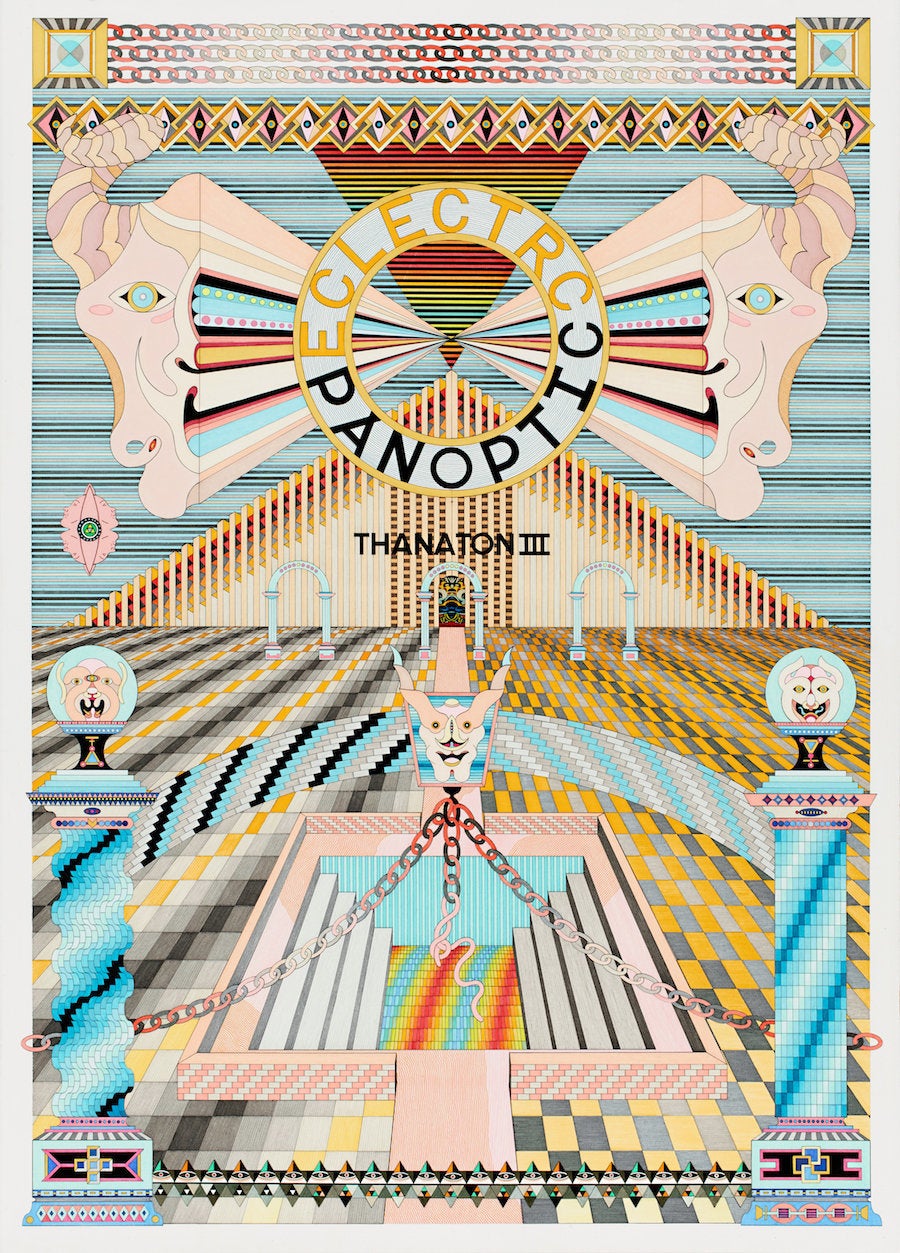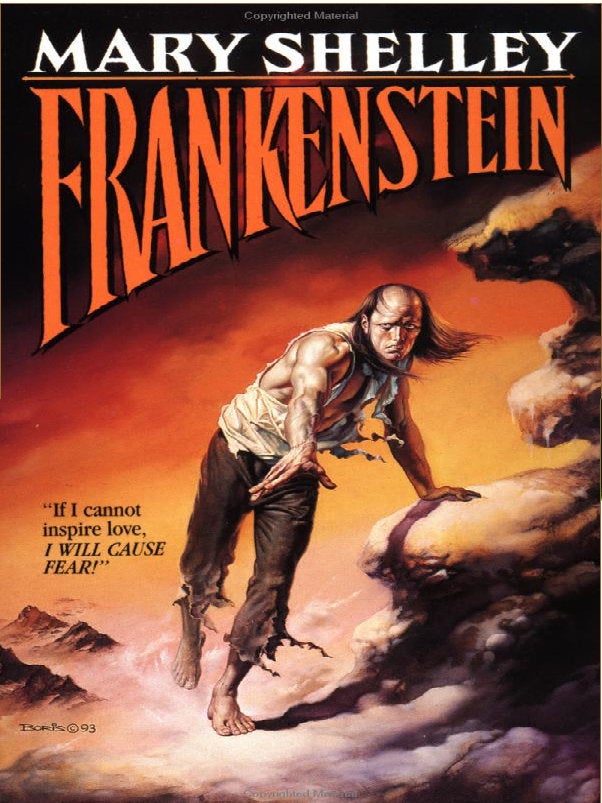Do you remember the first time you thought that maybe -- just maybe -- there was more to reality than meets the eye? Maybe you had a hunch that your stuff came to life when you weren't looking. Or that the entire world was a fabrication you built up in your imagination, perhaps even an elaborate performance piece. Or that, as my high school science teacher dropped on us one fateful day, we're all just brains in a pan.
For many of us, these occasional "WTF" moments fade into the background as so-called life continually offers up more pressing matters. For artist Jess Johnson, however, the possibility of alternate realms of existence is far more than a half-baked conspiracy theory. Since she was a kid, growing up in small town in New Zealand, Johnson has had a nagging suspicion that there is a space beyond the real, where reality is made. And if only she could find the right portal, she'd know for sure.
Eventually, as an adult and an artist, Johnson decided to create the portal herself. To do so, she drags reality's cosmic underbelly into the real world through handmade drawings of impossible architecture, fractured language, floating, malleable bodies and kaleidoscopic patterns. If your 1990s Macintosh screensaver spiraled into a synchronized routine choreographed by an invisible tyrant inside your hard drive, it may look something like a Johnson drawing.
In her perspective-warping images, rituals stripped of their meaning repeat on a loop, while undressed individuals assume yoga-like poses with wearisome monotony, like fleshy cogs in an eternally spinning machine. Dense patterns eat up every last inch of blank space, folding in on themselves to suggest an infinite expanse that is quietly closing in on you. It's a nightmarish realm built from pretty colors and oddly intriguing phrases, even if they don't quite make sense.
What is this alternate world and how did it come to be? Johnson herself explains below.
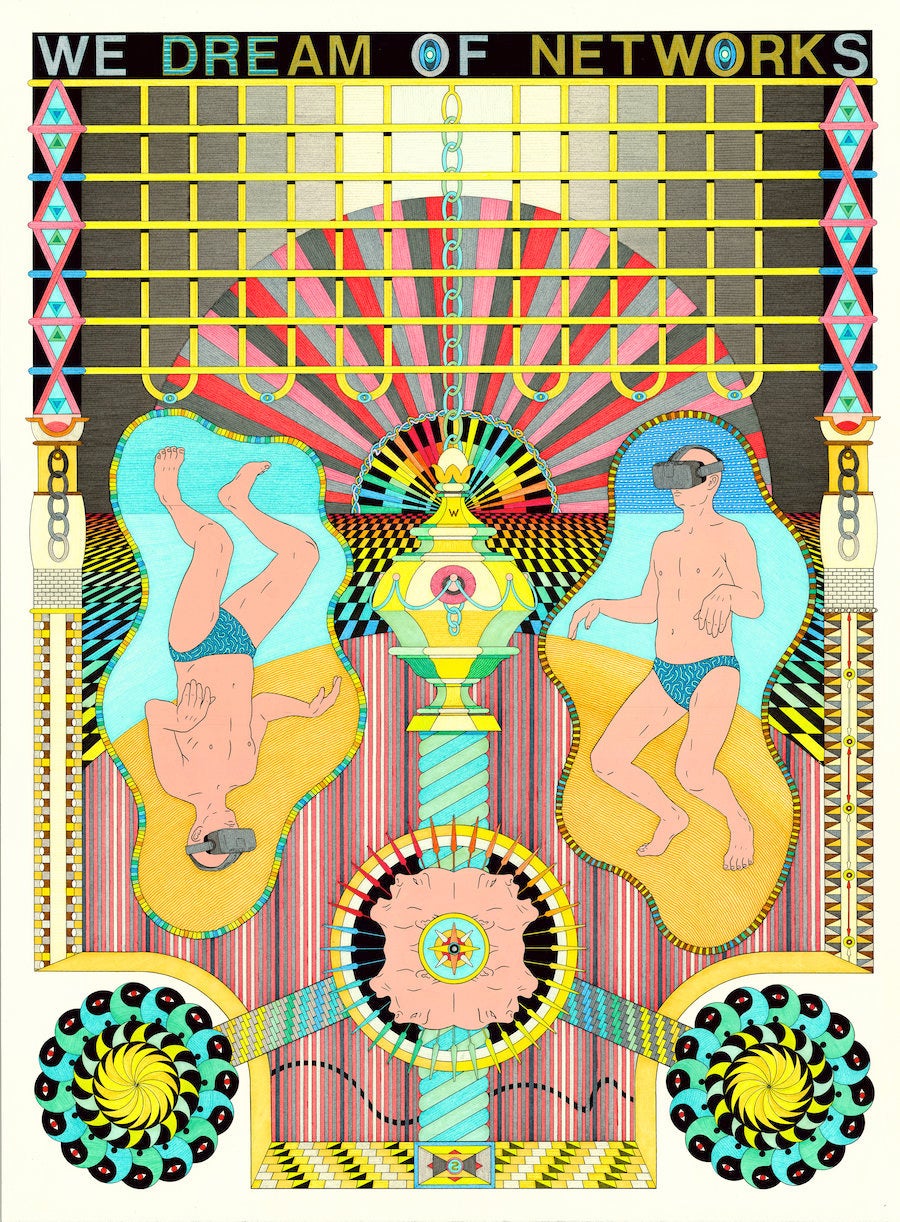
In an interview with Dylan Pasture you said that since you were a kid you "had this idea that there was more to the world than what was being revealed to me." Do you remember how this idea first occurred to you?
Yeah, I do remember how that idea first occurred to me. When I was little I devised these games trying to catch the world around me in a trick. I remember being quite stuck on the idea that reality didn’t extend beyond what I could see. So if I was sauntering down the hallway and passed a door, I might suddenly jump into the room really fast in order to try and catch the room materializing from nothingness. I imagined that I may catch a glimpse of white fuzz like the static of a television channel after midnight -- this was New Zealand in the '80s.
Can you talk more about the experience of growing up in 1980s New Zealand?
I think the defining aspect of growing up in small town in New Zealand was isolation, which probably engendered a huge curiosity for worlds outside my own relatively small one. I found these windows to other worlds through books and movies. And I gravitated towards the stuff that was as far removed from my reality as possible; worlds so detailed that you could lose yourself in them. The idea of pulling a world into existence through sheer will and an abundance of detail is still really potent to me.
What were some of those books?
There’s a small handful of books that got embedded into my psyche and whose themes play out in my work: The Inverted World by Christopher Priest; everything that Octavia E. Butler wrote; a short story called "The Langoliers" by Stephen King; The Never Ending Story; Riddley Walker by Russell Hoban; and Dune by Frank Herbert.
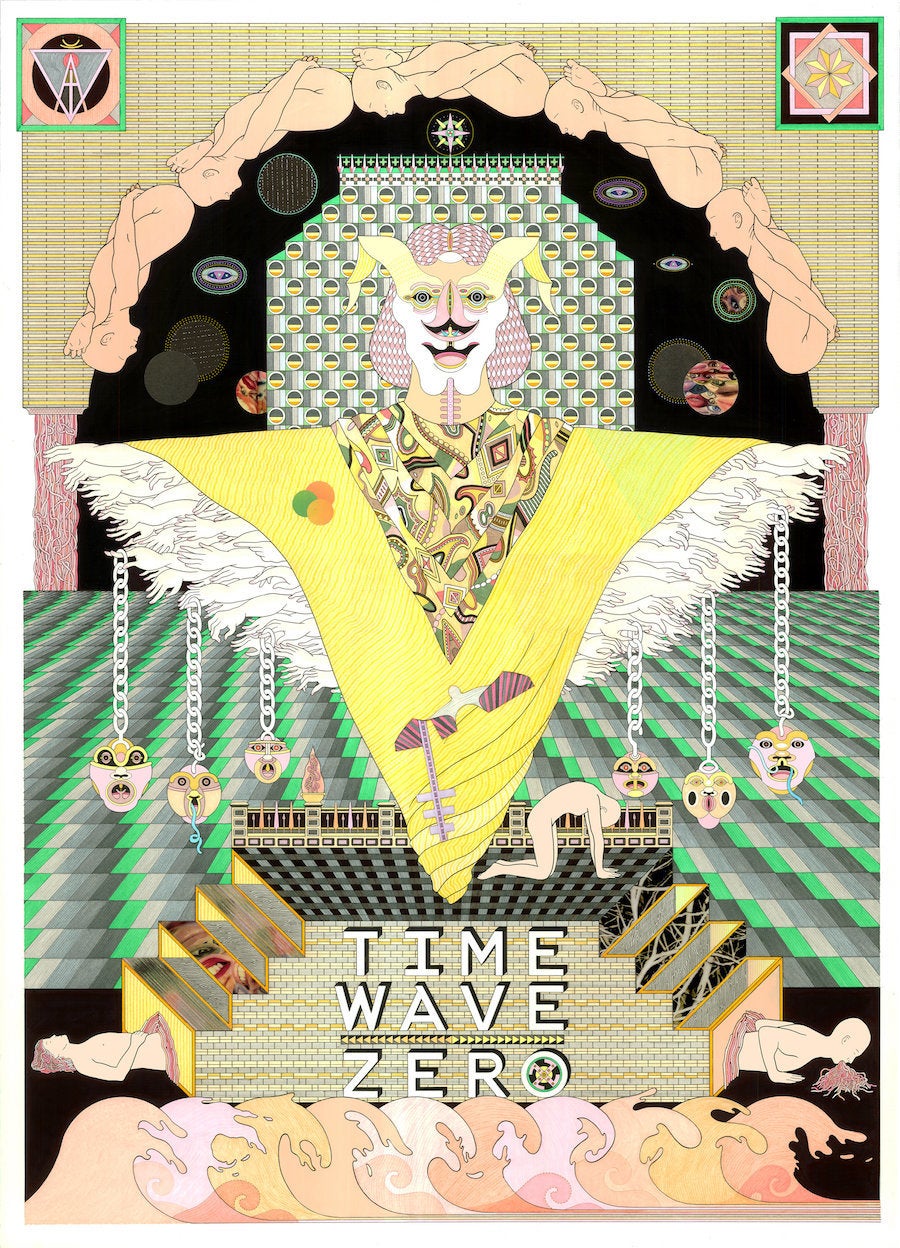
What were some of the visual influences that shaped your understanding of this alternate reality where reality is made?
In terms of visual influence in my work, I’m probably just a product of my upbringing and the '80s and '90s cultural influences of the time. Part of my formative mental stew was an interest in comic books, science fiction, horror movies, early video games, all that stuff. It's obvious that computer graphics play a big part in the visual "look" of my work but I have a pretty conflicted relationship with computers. Which is evidenced by my drawing everything by hand!
I think we’re all just really used to imagining how the world looks to machines and that why my imagery has this machine-like appearance. Most of what we look at every day has been designed digitally by a computer somewhere. It's like all our images have been fed though a machine at some point and regurgitated back to us. I’m just regurgitating it back to them as a drawn image.
How has the landscape of the Internet changed the shape of your imagined reality, if at all?
I think about the Internet a lot but it's from this weird, outside place. For kids born into it there’s no such thing as "the Internet." For them it's the world. But all the wiring in my brain happened in a completely different world than it is today. Growing up in a small town, pre-Internet, I got really accustomed to going deep into myself for my entertainment.
Being by myself, with zero distractions, is a really comfortable state for me. Computers and the Internet makes me scattered and anxious. It's probably not a good thing to say about yourself as an artist but my kind of brain is like the last of the dinosaurs. I’m OK with that though. I like not understanding anything. It means we’re evolving.
So, no Internet when you're working?
My studio in New York is a tiny windowless room underneath the footpath in Delancey St. I think it used to be the basement’s storage closet. There's no Internet down there and my phone barely gets reception. I call it my rathole but I love it. It's a clean white box and all I have is a table with my pens. When I shut the door I am shutting out the whole world and I have complete control over my own universe. To me that feels like my natural state.

What came first -- your desire to make art or your interest in alternate layers or modes of reality? How did one influence the other?
I think the two formed simultaneously as a kid but it was only as an adult that I merged them together. It took me a long time to realize that I could. I was a good artist as a teenager, but then I went to art school and I lost any confidence I had. I think I was intimidated by all the contemporary art world ideology. I decided I was lacking in what I knew about art and I needed to learn more and get smart enough before I could ever enter that "dialogue" as an artist. I basically got intimidated and split my world into two.
What did the work you made in art school look like?
At school I would make stuff that I thought looked like "proper" art, but at home I had all these secret notebooks that I would channel all the real stuff into. There was nothing powering the other "art" so eventually it petered out. I dropped away after art school and did a bunch of other things but always kept up my notebooks. It wasn’t until I was much older and cared less about what people thought that I started taking things from my notebooks and making them into bigger drawings. It built from there.
Would you say that most of your artworks allude to a specific alternate world that you've constructed? Does this alternate reality have a name?
No, the world doesn’t have a name. I think it might actually kill it to name it! I think the world acts more as a placeholder. It's like a stage in my head that I can project things onto and play things out. Over time the stage set has grown more complex. There’s been an emergence of specific architecture and rituals and social hierarchies between the characters. I constantly reference back into early drawings so an internal dialogue and logic has been built up over time. It’s got to this point where it’s almost self-generating and I can just watch it play out on the paper.
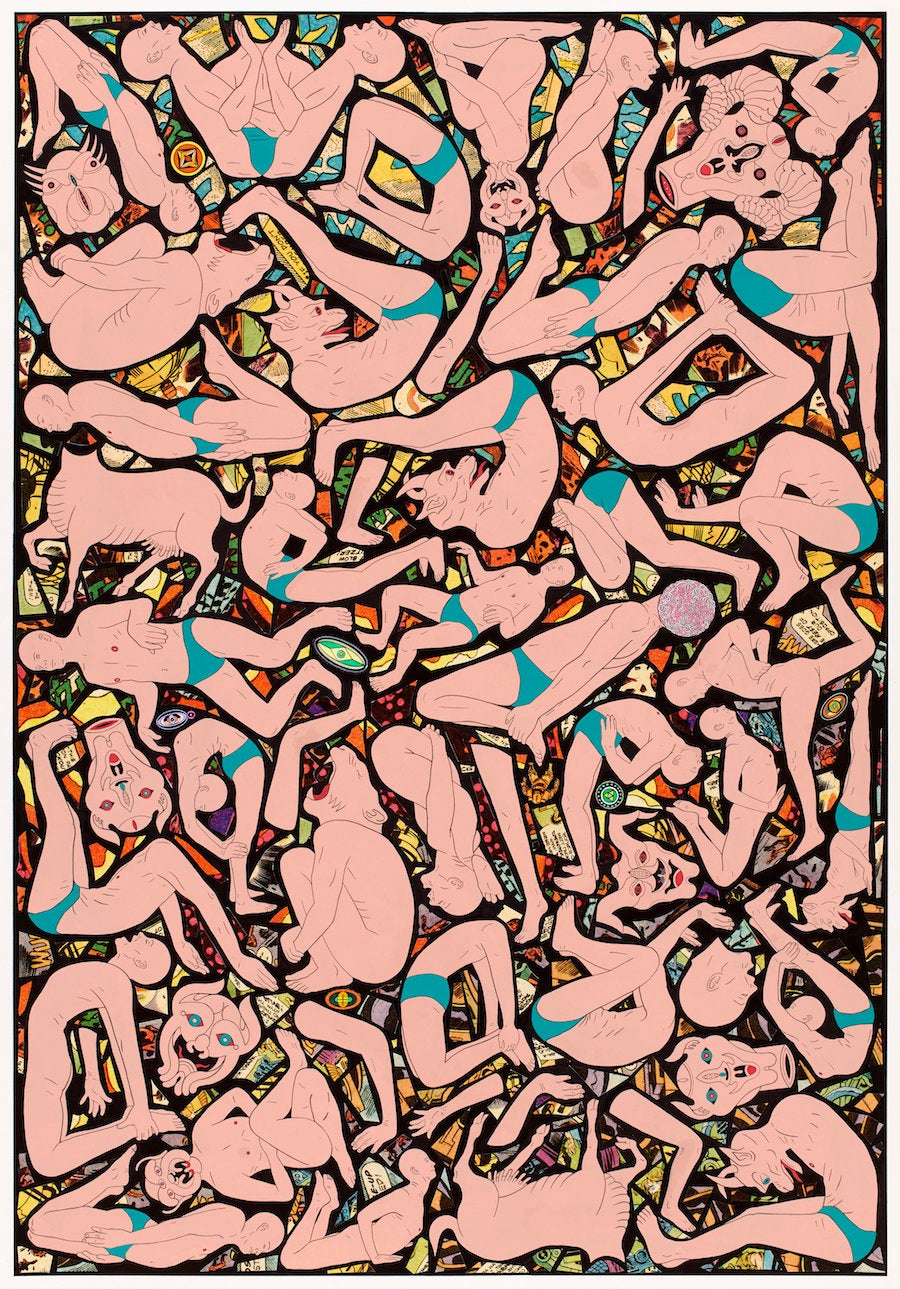
Many of your drawings feature nude or scantily clad men, often contorted into strange shapes.You've described them as being “caught in these repetitive .gif cycles." What is the relationship of these men to the men on Earth?
I don’t actually think of them as men. Although I’m often asked why I only draw men so I guess they must present as that. I think of the bodies I draw as neutral, unformed as people. I strip them of individual signifiers; hair, clothes, genitalia. They’re basically flesh receptacles awaiting imprinting.
I’m not sure about what the positions mean. I’m not sure if the figures are in positions of supplication or torture. It floats between the two. It's like they’re manipulated into these contortions but they’re unaware of their actions. If I’m being really didactic in making connections between the real world and my work, the contortions probably reflect something about societal pressures to perform and fit in. I definitely feel tense and pressed upon a lot of the time when I’m outside in the world ... so maybe I punish the figures in my work in similar ways?
How do you conjure the language that appears in your work?
One of my favorite books is Riddley Walker by Russell Hoban. It’s set in a post-apocalyptic world that is written in this strange re-constructed language. In the book a new world has been formed from the wreckage of the old. Language itself has been shattered and put back together. I think thats what I’m trying to do with the language in my work. The world is being dragged into existence drawing by drawing and the language is gaining form at the same time. The language is still muddy and nebulous to me but it might gain structure over time.
Do you draw from certain texts or manifestos or are the sayings formed in your imagination?
I have a document on my computer of words and phrases. Whenever I start a new drawing I open it up and look through it. The text is almost always the starting point. The number of letters will give me my mathematical starting point of how to arrange the words on the page. The compositions all hinge from there.
The phrases are often rhythmic and insistent. I choose them because they get stuck in loop like a thought-worm. I might find words in science fiction books or strange schools of thought. Mostly I'm attracted to made-up words. Made up by me or other people. I’m bad at remembering my references because often it's the shape or the sound that attracts me and I might morph the spelling into something else.
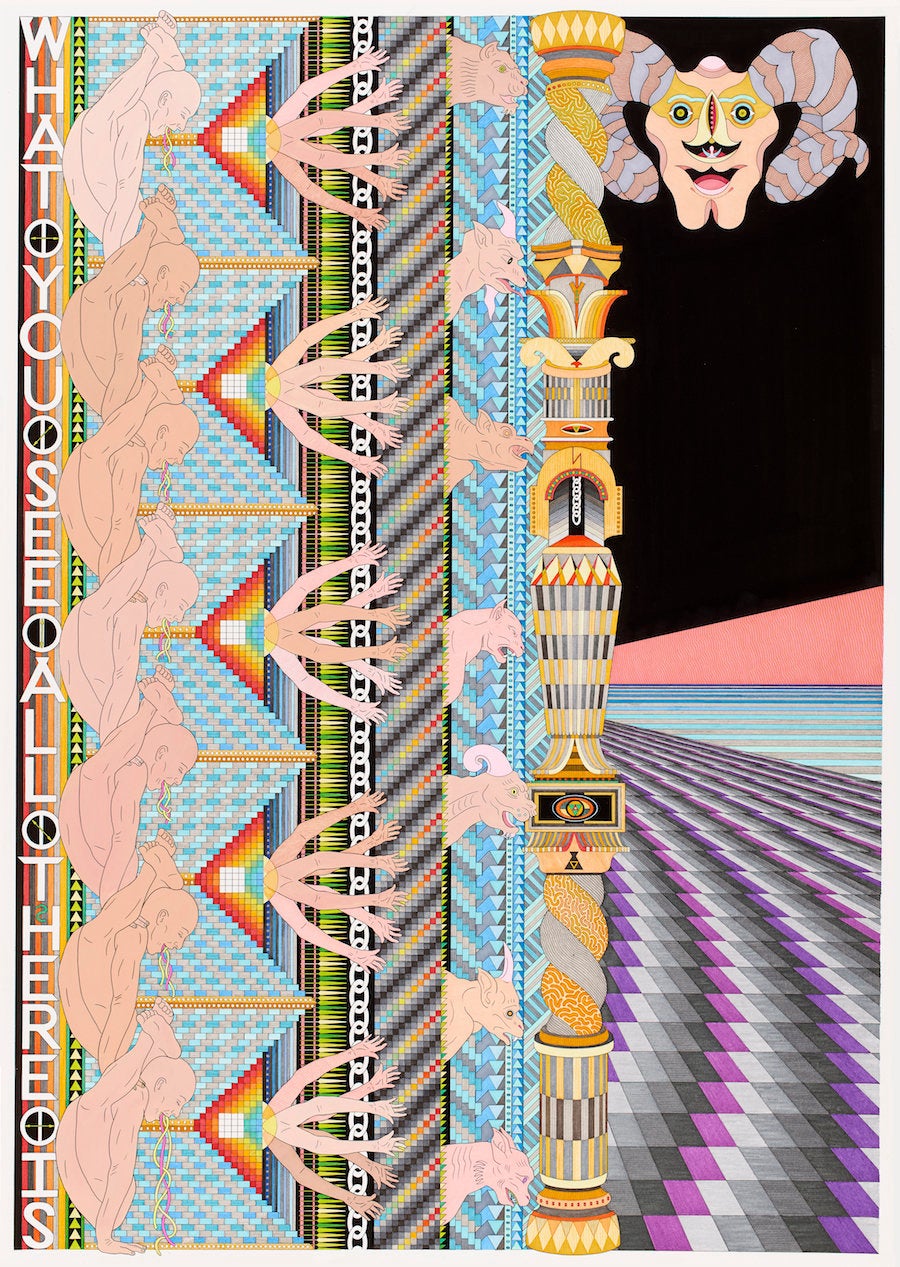
Can you describe your process for the two-dimensional works, specifically how the handmade overlaps with digital processes?
I draw my images by hand because thats the first tool I ever picked up. Drawing's been with me since a kid and it's how I get my thoughts out. I don't know how to do that any another way except for writing, but a lot of my thoughts are so murky that I don’t know how to fit them into language.
Do you ever work digitally?
I’m not interested in creating digital images on a computer. Foremost because I hate sitting in front of a computer and secondly because I need something to do in the studio. I think everyone devises an art practice to suit their psychology. I like spending a lot of time by myself so I make artwork that is labor intensive and doesn’t require much interaction with others. The time and labor is also a really important part of the work. It's like I need those long hours staring at paper in the studio to let the imagery rise to the surface. The images couldn’t happen quickly. It's more of a slow dredging process.
Some of your drawings are then turned into virtual reality animations. How is this done?
After I draw the pictures, Simon Ward, my video collaborator, turns them into animations. I give them to Simon as scans and he makes the creative jumps to move them from 2D into a 3D world. But it's important to us that the animations still retain this drawn, human quality. If the world were created entirely digitally it would be a really cold place. Making the human hand visible in the drawings and digital works seeds it with this little life-force. It attracts the psyche instead of repelling it as completely digital worlds can have a tendency to do.
Drawing has always been a really solitary and insular process but I love being able to hand over my work and see the world expand in these unexpected ways outside of my studio. It just requires the right people with a shared sensibility.

Your work reminds me a lot of psychedelic Japanese work from artists like Keiichi Tanaami. Would you describe your work as psychedelic?
I’m pretty comfortable with my work being described as psychedelic, although I find a lot of psychedelic work quite annoying, I think because I recognize the same compulsions in myself. I have a tendency to get lost drawing repetitive pattern and endless detail but I hate indulging it just for its own sake. It's like mystic noodling or being on the receiving end of someone's long drug monologue. If I let it go unchecked I’ll just create this impenetrable wall of pattern. So I try to channel this compulsion to a purpose, into building a world and ascribing a structure. I think all the repetitive patterning that I do in my drawings lulls me into a place where my thoughts can spiral into these really interesting places. It's like a really long-winded drug experience that I don’t need to take drugs to have.
What do you see as the relationship between drugs and technology in terms of expanding consciousness? How does art fit in?
I like taking drugs occasionally but I can’t make anything when I do. I prefer this way because at least I’ve produced something at the end of it.
I listened to this scenario described by Terence McKenna on a podcast -- he’s an American psychonaut who spoke a lot about virtual realities. He had a very Arcadian vision of technology. In it he described a speculative future where the world was once again in lush ecological harmony and humans roam the planet in small familial groups as they once did in the Pleistocene era. But behind people's eyes was evidence of an incredibly advanced technological civilization. McKenna saw technology as becoming smaller and smaller, until it disappeared and became invisible.
In this future, "technology" was ingested like mushroom spores and its results were cellular and transhuman. The result being a connected human intellect and consciousness and a dissolution of boundaries. Work and disease had been eradicated and people just roamed around playing on the galactic web of consciousness that streamed behind their eyes. There was so much happening in their minds that they had lost the desire to labor and build cities and enact all the physical havoc upon the earth.
I’m really attracted to this idea of technology taken in this direction. It’s very psychedelic ... that human consciousness can be enhanced and expanded via technology to do incredible things and create harmony. As opposed to the way we currently engage with technology, which is to let our phones do all the hard work for us like reading maps or remembering information while our brains turn to attention-deficient hamster mush.
What are you working on next?
In July I’ll be spending a month in Edinburgh for an exhibition at the University of Edinburgh’s Talbot Rice Gallery. My collaborator Simon Ward is coming over from New Zealand and we are going to bunker down in a work space at the Uni to make our next virtual reality artwork for Oculus Rift. Aside from that I’m just drawing in my studio. Eventually I’d like to have a show in New York.
Johnson's work is currently on view at Jack Hanley Gallery in San Francisco, part of the group exhibition "Future Nature."
